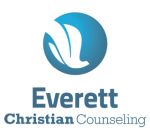In this article, I’ll be giving a case study in executive coaching and will provide practical tips for the best way to succeed in job transitions.
A Story of Job Transition from a Management Consultant
I have landed in various consulting jobs. Whatever job one may land in, good and noble intentions are not sufficient, but as the saying goes, “The proof of the pudding is in eating,” and one should be able to deliver results. In a pragmatic world where realism is actually contained in action and not in talk, if one does not fit in, it will be evidently clear that the job can’t be altered to fit into the management or internal consultant’s style, but the consultant has to adapt to the requirement of the job.
 At times, it may create tension, and many times, the internal consultant’s inputs and suggestion may not be adopted by the board of directors, but criticism of the existing methodology or job functions will be an area the consultant would be least focusing upon. In my role as a consultant, I had been asked to review and report the tasks undertaken in different departments, vet their suitability, and bring out suggestions for improvements.
At times, it may create tension, and many times, the internal consultant’s inputs and suggestion may not be adopted by the board of directors, but criticism of the existing methodology or job functions will be an area the consultant would be least focusing upon. In my role as a consultant, I had been asked to review and report the tasks undertaken in different departments, vet their suitability, and bring out suggestions for improvements.
I can bring an objective view of the existing internal processes that shape the daily activities in production or services. I can shine a light on the existing relationship between the management and the employees and among the cadres as to whether theses call for any improvements and whether employee satisfaction and customer satisfaction can be sustained and improved at all levels.
Success as a consultant involves monitoring expenditures in a production line. Stagnation, too, can occur and bottlenecks and problems have to be resolved quickly to avoid any loss of production time or wastage of manpower and machine time. Even an idling machine affects the opportunity cost because it is not being used, but still occupies space and incurs rental or interest cost on its investment.
So an internal consultant is more or less required to carry out an internal audit and should be able to bring out the best possible scenarios from different concepts and models, evaluating the merits and deficiencies of each model for final approval by the management. Internal consultants should be able to model different scenarios from the existing model and as far as possible take out the variables or keep them at a minimum.
Scientific modeling is the key in putting available data and knowledge to good use. Patterns can also be created and studied from the various existing models that were implemented in the industry’s past. Investors expect a good return on their investment and the stock prices which is the market perception of the value of the company is heavily dependent upon the profitability or return on investment shown by the company.
One of the most essential and utmost priorities for any business is confidentiality. By hiring external consultants, the company is susceptible in exposing its methodology and modus operandi to competing interests, in spite of any confidentiality agreements signed with the consultant who may acquire insight, fresh knowledge, and expertise.
There will be a tug of war between the need to keep certain company strategies to its top management echelon and the business need to keep all operations transparent to the whole of the company’s regulators, workforce, customers, suppliers and all other stakeholders so that through everyone’s collective cooperation and support, performance optimization can be achieved.
This requires reliable, honest, trustworthy, and skilled personnel who will not be motivated by any extraneous factors in arriving at their conclusions and recommendations in accordance with the vision and aim of the top management of the company.
Business enterprises have to orient towards the profitability needed to thrive, and a loss-making firm will not be able to sustain itself without additional capital injection from the shareholders. An internal consultant should be able to continuously feed reports to management on market conditions, viability, and sustainability of all future operations, in a fast changing consumer-oriented and technologically fast-moving marketplace.
 Overall, I was able to reduce and eliminate inter-departmental rivalries. This led to management and the workforce having a unified, cohesive plan and goal-setting agenda to embrace the company’s vision to work together as a team motivated by success and profitability.
Overall, I was able to reduce and eliminate inter-departmental rivalries. This led to management and the workforce having a unified, cohesive plan and goal-setting agenda to embrace the company’s vision to work together as a team motivated by success and profitability.
Challenges to Effective Transition
The main challenge is to gain the trust of the management and employees and for them to open up and reveal their innermost thoughts about their work and job functions. Since the consultant only reports to the management who contracted him for a specific general task, the line employees may not necessarily cooperate, fearing for the security of their jobs, and the top managers may not like to be disturbed, as they may be too busy to give the necessary cooperation to the consultant or how much they may so desire.
One possible challenge is to get a grip on the health of the whole company. It may not be possible to do a stress test at the beginning of the consultant’s entry. Negative criticism – even if warranted but avoided for the sake of good human relationship – can be a problem as to how to smooth things without getting into the way or affairs of another human being.
The consultant has to work very hard to get to know all the aspects of the company operations and he may be faced with discouragements as an intruder rather than a confidence keeper. There may be areas where the consultant lacks the necessary technical know-how or areas beyond the scope of his training. These can create a challenge to the consultant as the person has to admit his/her fallibility and request others to help to expand his/her knowledge horizon.
 Challenges include the fact that a new internal consultant is learning about job duties and that failure points are likely on entry due to the fact that a person is still learning. A barrier to successful work as an internal consultant may include not being seen as an expert even though one may have the academic credentials and experience. Another difficulty might be the need to learn about new systems or methods that are outside the scope of the consultant’s expertise. A new consultant may have to develop or manage an organizational structure, challenges due to having an ambiguous role, and organizational politics.
Challenges include the fact that a new internal consultant is learning about job duties and that failure points are likely on entry due to the fact that a person is still learning. A barrier to successful work as an internal consultant may include not being seen as an expert even though one may have the academic credentials and experience. Another difficulty might be the need to learn about new systems or methods that are outside the scope of the consultant’s expertise. A new consultant may have to develop or manage an organizational structure, challenges due to having an ambiguous role, and organizational politics.
Quick Tips for Job Transitions
1) List duties/responsibilities/achievements that you have had. List out the results of your actions from previous job duties/projects. Tell a short story regarding your achievements during the interview.
2) To find jobs, examine online job boards and narrow them down by industry and interests. Use LinkedIn to connect with people in a company and always link to HR Director. Research the company on their website, in journals, etc.
3) See career development in a positive light. Asking unconditional positive questions is an excellent way to utilize God’s giftings. A useful technique is to adopt appreciative inquiry. Appreciative inquiry is a model utilizing an understanding of strengths and applying it to different areas of your life.
4) Solving problems and challenges faced by customers, employees, management, and stockholders in achieving their goals. This can be done by being a network node for organizational problems involving people. Getting to be the ‘go-to’ person requires documenting and expressing a proven track record of solving organizational problems that lead to a measurable return on investment in the organization.
5) Interview people who have held similar positions/roles in the organization and industry you plan to work in. Compile your survey results to give you a holistic preview of your work tasks. This will enable you to have a head start in achieving success in the workplace.
Key Executive Coaching Tips to Succeed
Build the key formal and informal networks in the organization
Expanding friendship/political networks within the organization before and after hire is important. A good way of doing this is to start informational interviews and socialize with industry insiders in organizations of interest to you. Not only will you gain crucial knowledge about organizational culture and work practices, but also you will have an ally to help you get hired or advocate for you once hired, making transition into a new role easier. After hire, be proactive in finding common interests among co-workers. Perhaps join a company-sponsored volunteer organization to make a difference in the community.
Seek negative and positive information about an organization
Organizations will want to put their best image forward. Do not be afraid to ask what strategic areas have been left unexplored by a company of interest during an interview or when talking with someone from a company of interest before an interview. Ask for a realistic job preview or whether something similar can be provided to you based on your interest in working for a particular organization.
Ask how you can resource the company
Research indicates that pre-entry knowledge is mediated by task mastery and role clarity leads to organizational commitment. Make a list of all the job tasks, skills, and knowledge areas you feel you have mastered for a given job description. Think outside the box for solutions to problems the company has not thought of. Ask questions about parts of a job description that are not clear to you and if you cannot meet a specific need of the company, think of other ways you can resource the company with a particular need on the job description. Practically, make use of all the resources you hold that a company may not have access to.
Develop learning agility: Adaptability
Adapting and learning makes a huge difference in mitigating performance and feedback anxiety during the first year of a new job. Realize that you will often get worse before you get better! Be an active listener, learn about your new environment, and study the key stakeholders in your company. One practical way to do this is to get a mentor that is an organization veteran so you can take on the values, beliefs, and behaviors of those in the organization. Build trust and rapport so that failure can be discussed openly and a solutions mindset can be developed with your boss and fellow staff members.
Think big: Moving beyond being an individual contributor
Develop a systems mindset by building opportunities to chat/share work with employees for all levels on an organizational chart. Offer to solve problems outside your department. Find out what opportunities the organization is missing as a whole. Collaboration is better than competition in the workplace.
 Learn and be adept at project management, delegation, and soft people skills. A practical way to do this is to start a project that benefits various departments and draws upon the expertise of many departments and subject matter experts. Realize that servant leadership goes a long way in an organization. Servant leadership is a combination of courage to do things others will not, and to have humility in doing tasks for other employees that makes them look good. Servant leadership is the example Jesus gave us.
Learn and be adept at project management, delegation, and soft people skills. A practical way to do this is to start a project that benefits various departments and draws upon the expertise of many departments and subject matter experts. Realize that servant leadership goes a long way in an organization. Servant leadership is a combination of courage to do things others will not, and to have humility in doing tasks for other employees that makes them look good. Servant leadership is the example Jesus gave us.
“And Jesus called them to him and said to them, “You know that those who are considered rulers of the Gentiles lord it over them, and their great ones exercise authority over them. But it shall not be so among you. But whoever would be great among you must be your servant, and whoever would be first among you must be slave of all. For even the Son of Man came not to be served but to serve, and to give his life as a ransom for many.” – Mark 10:42-45
Conclusion
Following in Jesus’ footsteps in leadership and facilitation skills leads to successful job transitions. The strategies outlined here can be applied to transitions to any job. Job transitions require a lot of learning agility and people skills, which require the guidance of a skilled executive coach.
An executive coach will guide you through a process to mitigate the politics of many different interests in an organization. Recognizing and implementing solutions to a new workplace environment is exactly what executive coaching is all about. Transition from one workplace to another requires applying change management principles to one’s soul and psyche. Executive coaches are here to guide you in that change process and will help you work in step with the Lord to achieve your calling.
ReferencesBenjamin, B., & O’Reilly, C. (2011). Becoming a leader: Early career challenges faced by MBA graduates. Academy of Management Learning & Education, 10, 452-472. doi:10.5465/amle.2011.0002
Bidwell, M., & Keller, J. R. (2014). Within or without: How firms combine internal and external labor markets to fill jobs. Academy of Management Journal, 57, 1035-1055. doi:10.5465/amj.2012.0119
Gatewood, R. D., Gowan, M. A., & Lautenschlager, G. J. (1993). Corporate image, recruitment image, and initial job choice decisions. Academy of Management Journal, 36, 414-427. doi:10.2307/256530
Kammeyer-Mueller, J. D., & Wanberg, C. R. (2003). Unwrapping the organizational entry process: Disentangling multiple antecedents and their pathways to adjustment. Journal of Applied Psychology, 88, 779-794. doi:10.1037/0021-9010.88.5.779
Phillips, J. M. (1998). Effects of realistic job previews on multiple organizational outcomes: A meta-analysis. Academy of Management Journal, 41, 673-690. doi:10.2307/256964
Polach, J. L. (2004). Understanding the experience of college graduates during their first year of employment. Human Resource Development Quarterly, 15, 5-23. doi:10.1002/hrdq.1084
Wanous, J. P. (1989). Installing a realistic job preview: Ten tough choices. Personnel Psychology, 42, 117-134. doi:10.1111/j.1744-6570.1989.tb01553.x
Wanous, J. P., Poland, T. D., Premack, S. L., & Davis, K. S. (1992). The effects of met expectations on newcomer attitudes and behaviors: A review and meta-analysis. Journal of Applied Psychology, 77, 288-297. doi:10.1037/0021-9010.77.3.288
Wendlandt, N. M., & Rochlen, A. B. (2008). Addressing the college-to-work transition: Implications for university career counselors. Journal of Career Development, 35, 151-165. doi:10.1177/0894845308325646
Photos
“Direction,” courtesy of geralt, pixabay.com, CC0 Public Domain License; “Team Silhouette,” courtesy of tpsdave, pixabay.com, CC0 Public Domain License; “City Scene,” courtesy of Mike Enerio, unsplash.com, CC0 Public Domain License; “Space,” courtesy of NASA, unsplash.com, Public Domain License










